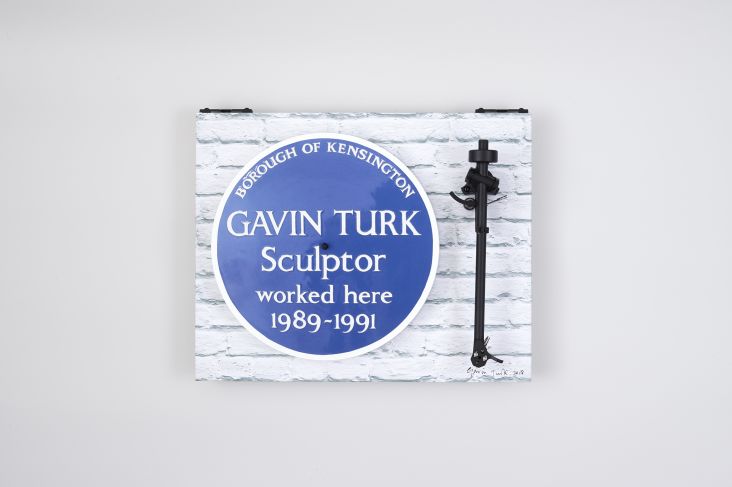Quick and simple tips to freshen up your website and boost your online reputation
If you work for yourself, you'll know only too well that the quieter summer months offer some respite and a chance to review what you're doing and how you might improve your business.

Image licensed via Adobe Stock
With your website being your main shop window, it's important to ensure it's doing what it's supposed to, i.e. attract and convert potential clients.
Could you be doing more? Is your website's copy persuasive enough? Does it reflect the quality of your work as well as show a little personality? These are all great questions to ponder before you launch yourself back into the usual chaos that follows a slow August.
Bearing in mind that it should inform, reassure and persuade people to hire you, here are some quick and easy tips to freshen up your website this month, so you can start September as you mean to go on.
Review your welcome statement
When someone lands on your website, what's the first thing they see? An instant grid of images, showcasing your latest work? That's good, but will it be enough to instantly grab that visitor's attention and intrigue them to find out more?
You need an opening line that's compelling but also explains who you are, what you do, and how you bring benefits. You also have to be personal and perhaps address the very problem that a visitor is trying to solve.
This is your "unique selling proposition" – a statement that outlines how you're different from the competition and why someone should hire you.
How do you create your USP? Consider who you're targeting and the industry they work in. Think about what makes you unique and why someone would benefit from hiring you. Remember to include any proof of your brilliance. Now convert all that into one or two short sentences – perhaps one is a more concise title and the other, a sub-header.
I always love to use Moz as a decent example of this. They get straight to the problem they solve with the statement: "Five billion searches are performed every day. Be found." Who could argue with that? And then, they follow with "Drive customers to your website, with the all-in-one SEO tracking and research toolset built by industry experts." It's perfect.
Now go away and write your own. Try it out on friends and family. Remember – nothing is set in stone. If your welcome statement isn't working, you can always change it.
Check for consistency
Writing a new welcome statement is a quick way to improve your entire marketing and be consistent in everything you put out there. It gets straight to the root of what you're doing, who you're doing it for, and how you're making a difference.
It will help you write relevant and enticing copy for the rest of your website. It will make you share work or case studies that specifically appeal to your target market. It'll even inform the type of blog posts you share.
What's more, having this strategic approach will make life easier for you, saving you time and money and helping you create a brand that's trustworthy, credible and appealing.
Is your current website consistent? Are there any tweaks you could make to ensure a good flow and user journey? Keep referring back to your welcome statement and go from there.
Add some evidence
Back up your welcome statement with evidence of skills and experience plus the brands you've worked with. Testimonials. Successful case studies. Award wins. Anything to inform, persuade and reassure.
Don't be shy of sharing juicy examples or stats of how you've helped others. You want potential customers to think, "I want that same magic for my own business too!"
Haven't any evidence yet? Make it your mission to collect some over the coming months. Enter awards. Send your work to magazines to gain press coverage. Ask existing happy clients for a little quote to put on your website. All will make a difference.
Nail your About page
The About page of any website is often the most important aspect. If someone has clicked on it after seeing your home or landing page, it's an excellent indication that you've almost won them over. Now you have to convince them you're the right person for the job.
When writing your About copy, always consider your audience. The human. The person that might be thinking of working with you. Use "I" and "you" – make it direct and friendly.
Talk passionately about your business, share your background and don't be afraid to throw in some personality. They say you should write copy like you're talking to a friend down the pub. Short, punchy sentences that aren't too formal and get straight to the point.
Be confident in how you present yourself. Repeat your welcome statement and elaborate on it. Remind people of the evidence to back up your skills and experience.
Be honest and be yourself
One of the things people look for when they land on any website is authenticity. They want to trust you immediately. Otherwise, they'll bounce off and go elsewhere.
Which means those stock photographs you uploaded 12 months ago might be doing more harm than good. Potential clients want to see the real you. They don't want fake imagery. They want to see the human behind the logo.
The same can be said for pretending to be bigger than you are. Don't get me wrong; I understand why freelancers do it. Even the word "freelancer" itself can have negative connotations. I get why some people call themselves "studios" instead and use loads of corporate language to impress. All I'm saying is that a little honesty can go a long way.
So get some professional photographs sorted as soon as possible. And present yourself truthfully with a less formal tone. These small changes can make a massive difference to your online reputation.
Look for redundant links or mistakes
Google punishes websites that have broken links and spelling mistakes on them. This means you could be lower down the search engine results pages for your chosen keywords. Not only that, real people might not trust you if your website's content feels outdated or wrong.
To keep your SEO and your reputation intact, go through every web page (yes, blog posts too) and see if any links or copy needs updating. For links, try the free Dead Link Checker or Google Webmaster Tools. For spelling and grammar, we can't recommend enough the wonderful Grammarly.
Introduce strong calls to action and easy navigation
Finally, last but not least, the whole point of your website is to encourage visitors to contact you and make an enquiry. You don't want to give them a second to think otherwise. Make it super easy for them to do so.
This means your navigation should be intuitive and straightforward. People are lazy and want clear "next steps" when browsing your website — like a Contact page, clearly labelled in the main navigation bar across the top.
And alongside your beautifully written welcome statement, throw in a call-to-action button, above the fold (i.e. before a visitor needs to scroll). Something that clicks through to your Contact page. Use language like "Talk to me" or "Get in touch". It's more effective than you think.
To recap
Before you launch back into a busier schedule, take some time to review your website and make any necessary. Consider the following:
- Is your welcome statement compelling? Does it immediately inform, persuade and reassure?
- Is your website consistent? Are you talking to the same audience throughout?
- Have you included evidence of your brilliance? Clients, testimonials, awards, etc.
- Does your About page sell who you are and show your personality?
- Are you authentic? Are you showing people the real you?
- Have you checked for broken links or spelling mistakes? Google will punish you for anything that's wrong, and humans won't trust you.
- Do you have a clear call-to-action above the fold? Is your navigation clear and intuitive?
For further reading, check out Optimizely's excellent article on how to improve conversion rates.





















](https://www.creativeboom.com/upload/articles/8e/8e5b35fcc20c6d0c1cee6cef407e6e5558d85d7d_732.jpg)



